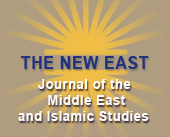Iranian Sites of Memory: The Case of Persepolis
Menahem Merhavi
One of the main features of the modern nation state in the Middle East is the official celebration of historical events and sites, which seeks to mold the public consciousness. An examination of this subject in twentieth-century Iran reveals that during the reigns of Reza Shah (1925-1941) and his son, Muhammad Reza Shah (1941-1979), a historical memory of Iran's great past was being nurtured and elaborated. For this purpose, Iran's golden imperial eras were highlighted while excluding long periods of "darkness" and "decline," in which no pride could be taken and which should best be forgotten.
From the mid-twentieth century onward, under Muhammad Reza Shah's rule, the emphasis was transferred from a historical narrative in which Persian culture was the focal point of Iran's past glory, to the monarchy as the central institution of this identity.
The most extravagant expression of the fostering of this legacy occurred near the archeological site of Persepolis, capital of the Achaemenid Empire, in October, 1971. Years of enormous investment culminated in a series of ceremonies throughout Iran, the largest of which took place at Persepolis, as well as in a series of events commemorating the foundation of the Achaemenid Empire and Iran's crucial role in human history.
This paper argues that the elaborate exhibition at Persepolis was an expression of political weakness rather than strength, revealing the failure of the Pahlavi modernization project and the growing alienation of wide sections of Iranian society.

